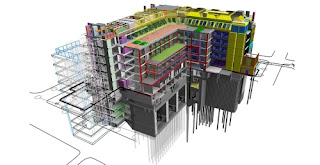Engineering Statics with MATLAB
Lester W. Schmerr Jr. ... 432 pages - Language: English - Publisher: CRC Press; (March, 2024).
This text makes use of symbolic algebra and vector-matrix algebra to demonstrate a new approach to learning statics. Symbolic solutions are obtained, together with the types of solutions covered in other texts, so that students can see the advantages of this new approach.
This innovative text is an extension of second-generation vector Statics courses to a new, third-generation matrix-vector Statics course, a course that addresses deformable as well as rigid bodies and employs MATLAB®.
MATLAB® is used as a “calculator” whose built-in functions are used to solve statics problems. This text uses vectors and matrices to solve both statically determinate rigid body problems and statically indeterminate problems for deformable bodies.
The inclusion of statically indeterminate problems is unique to this text. It is made possible by using symbolic algebra and a new, simplified vector-matrix formulation that combines the equations of equilibrium, the homogeneous solutions to those equations, and a description of the flexibilities found in the deformable elements of a structure to solve directly for the unknown forces/moments.
This text makes use of symbolic algebra and vector-matrix algebra to demonstrate a new approach to learning statics. Symbolic solutions are obtained, together with the types of solutions covered in other texts, so that students can see the advantages of this new approach.
This innovative text is an extension of second-generation vector Statics courses to a new, third-generation matrix-vector Statics course, a course that addresses deformable as well as rigid bodies and employs MATLAB®.
MATLAB® is used as a “calculator” whose built-in functions are used to solve statics problems. This text uses vectors and matrices to solve both statically determinate rigid body problems and statically indeterminate problems for deformable bodies.
The inclusion of statically indeterminate problems is unique to this text. It is made possible by using symbolic algebra and a new, simplified vector-matrix formulation that combines the equations of equilibrium, the homogeneous solutions to those equations, and a description of the flexibilities found in the deformable elements of a structure to solve directly for the unknown forces/moments.





